Top 7 ROCK FISHING RIGS (Setup & Fishing Guide w Pictures)
PUBLISHED 6 SEPTEMBER 2023
by Robert Ceran
Are you planning to go rock fishing, but aren’t sure which fishing rig is best for your purposes?
While fishing from rocks is generally simpler than boat fishing, it’s essential to use the right rigs to catch fish successfully this way.
In this article I’ll walk you through the best rigs for rock fishing, and will also cover how to fish them, and how to choose the ideal setup for your purposes.
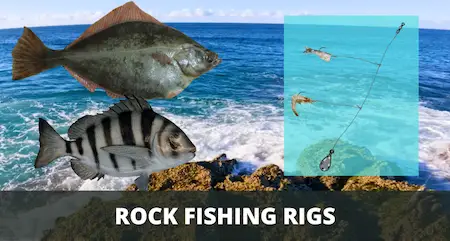
What are the best rock fishing rigs?
The 7 best rock fishing rigs are:
- Slip bobber rig
- Jig rig
- Carolina rig
- High low rig
- Fish finder rig
- Pompano rig
We’ll go over the strengths and weaknesses of each of these rock fishing rigs in full detail below, so you can decide which one is best for you.
Slip bobber rig
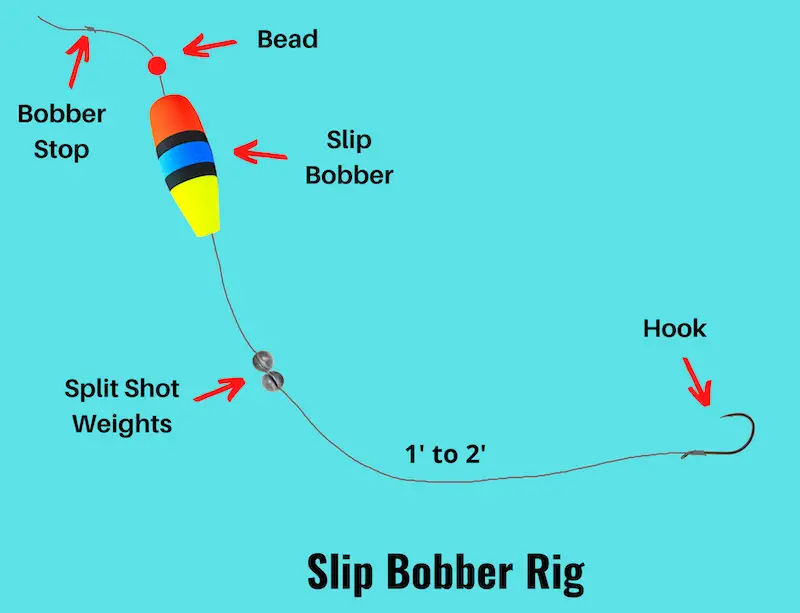
The slip bobber rig is a great setup for rock fishing, as it allows you to fish your bait suspended in the water column close to the rocks, while minimizing the risk of getting snagged.
Getting your hook or sinker snagged on rocks is the biggest challenge of rock fishing, and is made worse by the fact that many fish are caught close to the rocks, which means you have to fish your presentation close to them.
My favorite way to use the slip bobber rig for rock fishing is to bait it with a live shrimp, since this bait catches the majority of species you can target with rock fishing. However, you can also use this rig with cut bait or live bait fish.
The most commonly caught species with this rig in saltwater are sheepshead, rockfish, speckled trout, red drum, and pompano.
The slip bobber fishing setup consists of a bobber stop and a slip bobber threaded onto the main fishing line, as well as a weight plus split shot attached to the line below the bobber.
I like to use braid as my main line, and in that case it’s better to tie a fluorocarbon or monofilament leader connected to the main line with a barrel swivel.
My favorite hooks to use with this saltwater rig are circle hooks, since they avoid deep hooking fish, but you can also use a treble hook, J-hook, or octopus hook.
Start by setting the depth of the slip bobber to the middle of the water column. Then adjust the depth until you start getting bites.
I like to fish this rig as close to the rocks as possible, since this is often where the fish are foraging. But if there are sunken rocks, drop offs, or other structure further out, you can also cast your rig out to them.
By the way, you can use the same tactic with this rig for fishing from jetties.
Jig rig
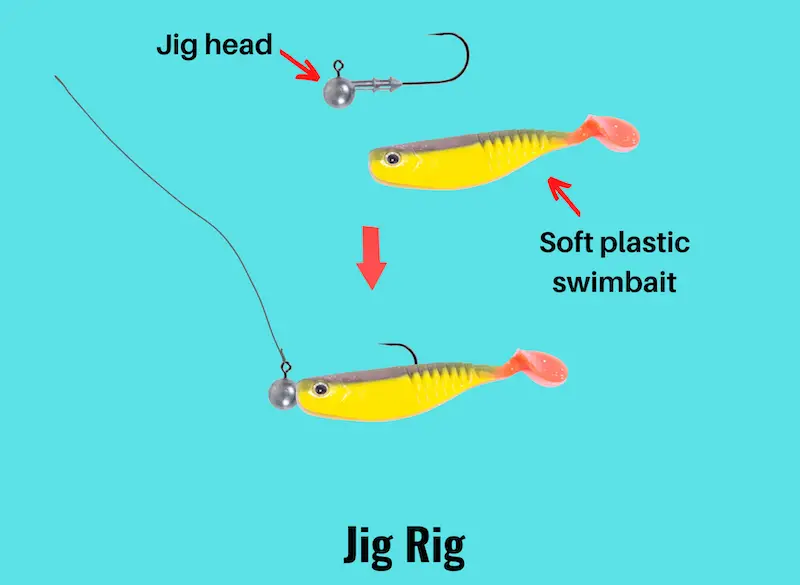
The jig rig is my go-to lure fishing rig for rock fishing, and is made with a jig head baited with a soft plastic swimbait that is tied to your fishing line.
And while the jig rig is extremely effective at catching a wide variety of fish around rocks, it comes with one major downside, which is that it often gets snagged.
I tend to lose a few jig rigs every time I throw them around rocks, but I’ve learned to learn to live with this, since this setup catches so many fish in saltwater.
The simple setup of the jig rig makes it one of the top saltwater rigs for beginners, but since it is also such a fish magnet, many experienced anglers love this setup.
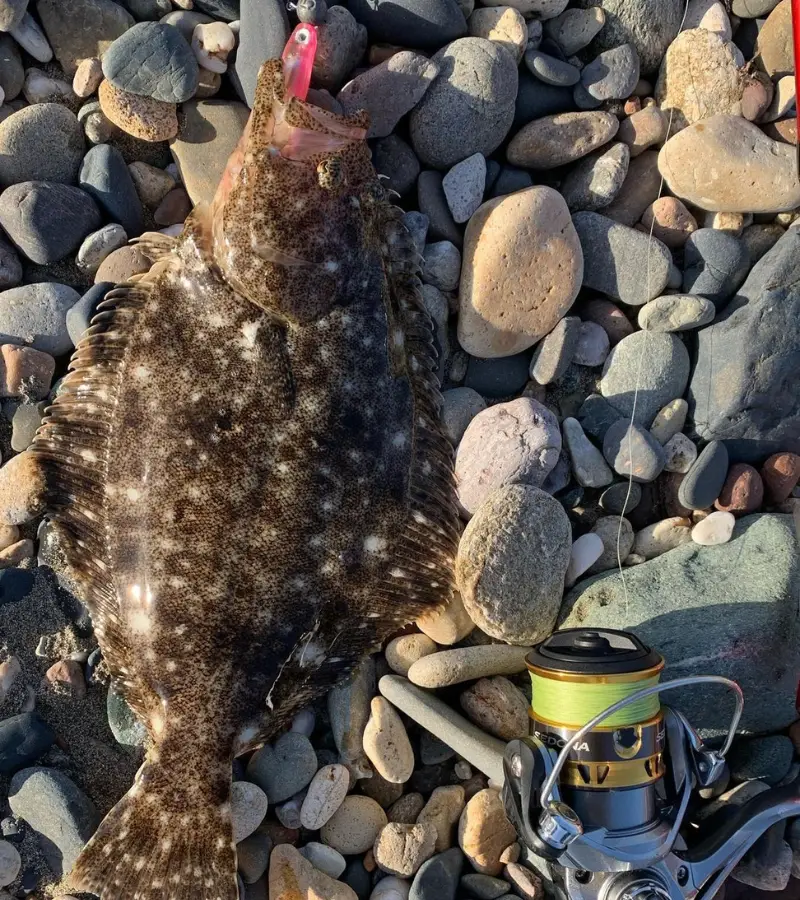
Image source: instagram/@pescadordeportivo_chile
The jig rig catches most types of fish that forage for crustaceans and small fish around rocks, including flounder, fluke, speckled sea trout, red drum, and snook.
In my experience, you’ll get most bites right next to the rocks, or in the vicinity of sunken rocks close to the shore.
Carolina rig
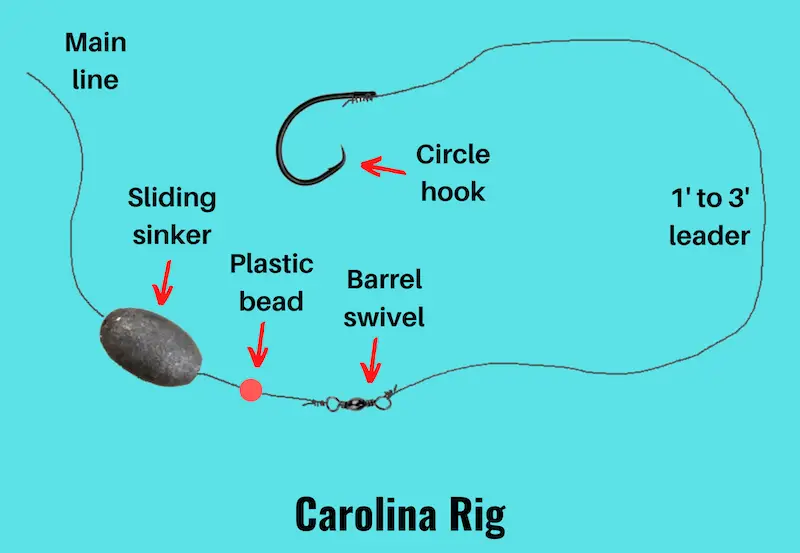
The Carolina rig is hands down the most versatile bottom fishing rig that is used by anglers to catch fish in both freshwater and inshore saltwater environments. So it’s hardly surprising that it can also be used with great results for rock fishing.
This setup consists of a sliding egg sinker that rides on the main line, as well as a protective plastic bead and a swivel that is attached to a 1 to 3 foot monofilament leader with a circle hook tied to the end.
The plastic bead is not absolutely necessary, but helps to protect the knot on the swivel from being damaged by the sliding sinker.
One of the biggest advantages of the Carolina rig is that a fish can swim with the bait without feeling resistance from the weight.
A great way to fish this rig is to cast it out just beyond the rocks, and then put it in a rod holder and wait for bites. I like to loosen the drag and use a bait clicker to detect bites with an audible signal.
I often use a bait and wait tactic when using a Carolina rig for rock fishing, while at the same time fishing a second rod actively with a lure.
High low rig
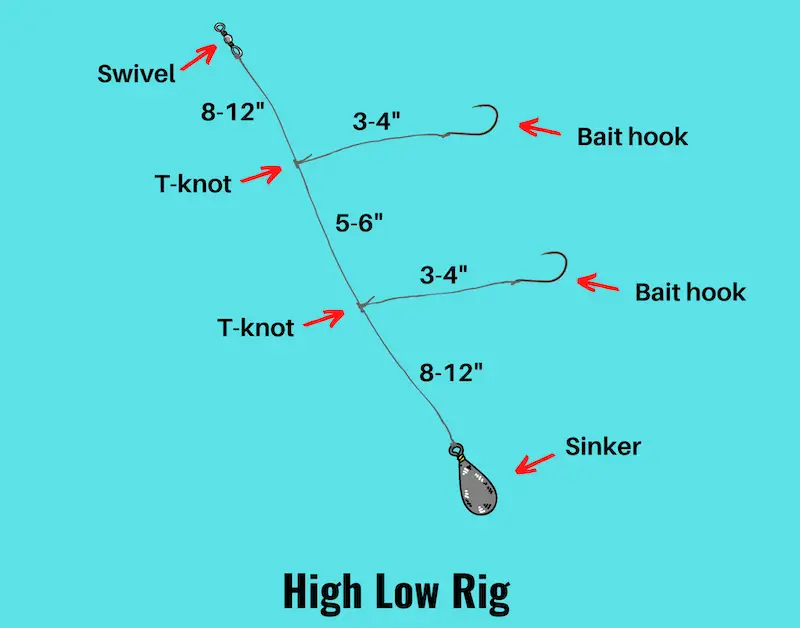
The high low rig is a 2 hook bottom fishing rig that can be effective for targeting schooling fish around rocks.
It consists of a sinker tied to the end of the fishing line, plus two hooks tied to the line above the sinker via T-knots.
Fishing with two hooks at the same time improves your chances of catching fish from rocks, as it not only presents more baited hooks to the fish, but also allows you to test two baits at the same time, in order to determine which one works best.
I use the high low rig to catch snapper, sheepshead, flounder, croaker, and fluke with rock fishing. But keep in mind that this saltwater rig easily gets snagged on the rocks, so I like to cast it a little beyond the rocks.
And when you retrieve your setup, pay extra close attention over the last feet of the retrieve, as this is where most snags occur.
Fish finder rig
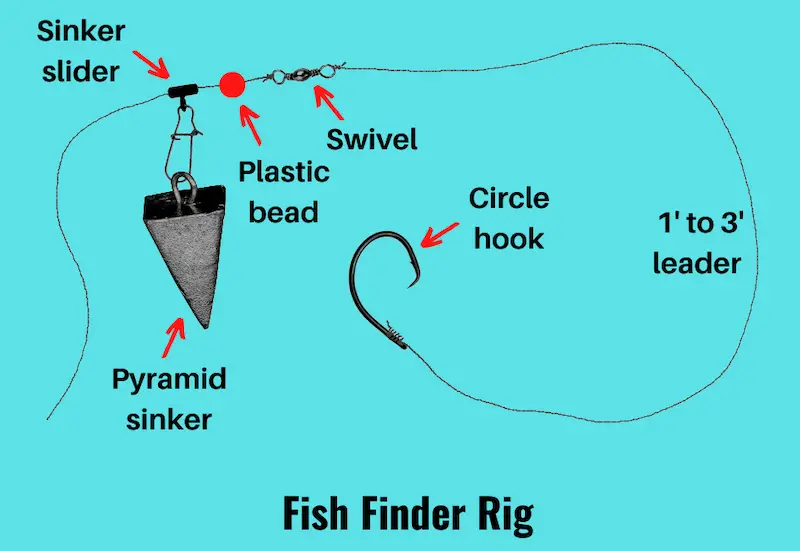
While the fish finder rig is most often used for surf fishing, it is also one of the best rock fishing rigs when there are sandy areas close to the rocks.
Just like the Carolina rig, this saltwater fishing setup comes with a sliding sinker, but in the case of the fish finder rig, the sinker is a pyramid weight.
A pyramid sinker digs into sandy bottoms, and acts as an anchor to hold your rig in place in strong tides or breaking waves.
So if you’re encountering strong currents while rock fishing, and there are sandy patches between the rocks, then the fish finder rig setup is the number one option for keeping your bait in the strike zone.
I also like to peg a float to the leader of my fish finder rig, since this lifts the bait up from the bottom, which helps to stop crabs from stealing your bait.
Pompano rig
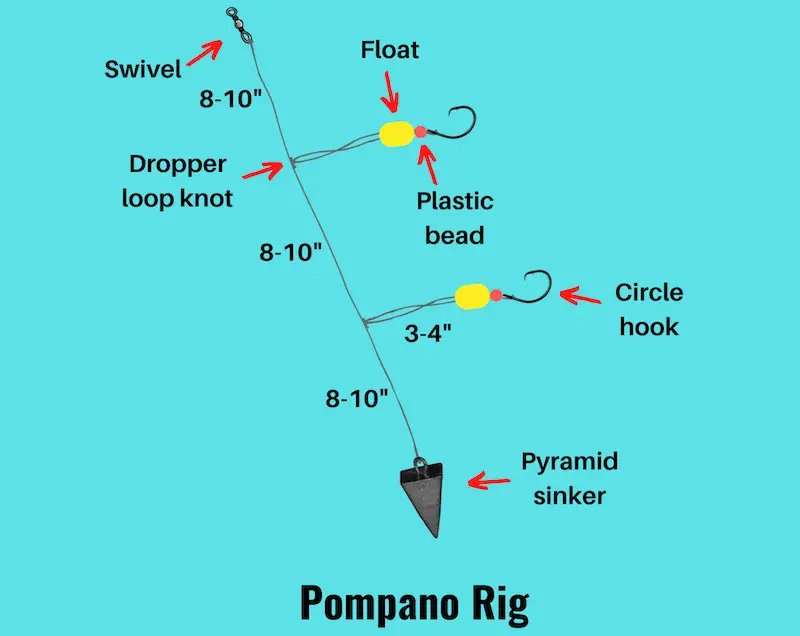
The overall structure of the Pompano rig is similar to the high low rig, but it is made with dropper loop knots instead of T-knots.
And what really sets the Pompano rig apart from other saltwater bottom rigs is that it comes with small bright floats rigged onto the snoods next to each hook.
The floats help to lift the hook up from the bottom, and this not only helps fish to find the bait, but it also protects the bait from marauding crabs that steal the bait from your hooks in next to no time
And while the pompano rig was originally developed to catch pompano, it also works for catching many other fish species that can be targeted with rock fishing.
